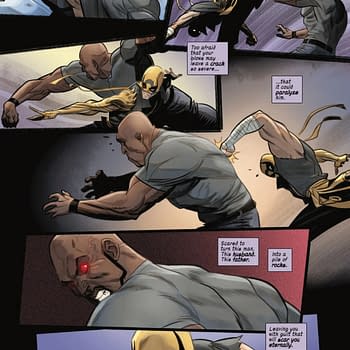Posted in: Comics, Recent Updates | Tagged: dark horse comics, Jason Wordie, Simon Roy, Tiger Lung
Comics Can Do Anything – Even Tell Us About Paleolithic Carpathian Shamans
This may well be the strangest title I've ever encountered in a graphic novel, and that even contends with my various forays to indie comic shows like Small Press Expo and Comic Arts Brooklyn. Tiger Lung by Simon Roy and Jason Wordie is a collection of related short stories, the first of which was originally serialized in Dark Horse Presents, and it now appears with 2 more stories and a sketchbook section in a slim, moderately sized and rather attractive hardback at 88 pages released in December 2014.

And I'm very happy to make this statement as someone who loves history, anthropology, and even the history of magical belief systems: this book is not full of cliched shorthand for primitive cultural practices. This book actually attempts to present historical material in a compelling way featuring the lives of believable characters who nevertheless are very different culturally and in their world view than modern human beings. Now, I actually really love high fantasy stories in comics, many of which create their own fictional ancient cultures or draw on historical elements, I would just like to salute a team who set out to take us closer to history in this way and help us understand our own human past as well.

Roy and Wordie leave a lot of mystery in tact when telling their story. We start in the "middle" so to speak, of events, we learn relevant information without too much exposition, and most importantly, when we "see" the world, we see it as these people see it. We see the spirits and dangers that they would have viewed. This takes us back to a time when human beings were more engaged with the natural world and viewed its hostile aspects as self-aware and specific. Here they are embodied by the strange and malevolent powers of the White Chief of Winter who enslaves the dead. One of the book's strangest, but notably unique, visual features is the presentation of spirits beings as having a visible nervous system and organs because the people of this culture believe in multiple souls residing in different parts of one's physiology, each with their own power.

The remarkable thing about Tiger Lung is the way in which things in the narrative remain strange to us as readers and yet Roy and Wordie invite us to be observers and peek behind the curtain on another way of thinking, a way of seeing a world steeped in wonders and terrible mysteries. It certainly shows us once again that comics are suited to any subject matter and can engage the reader in experiencing new perspectives almost as a matter of course through visual narrative.
I also happened to notice when looking around the Internet for info on Tiger Lung that there will be a book launch party held in Vancouver, so if you're in the region on January 23rd, keep an eye out:

















